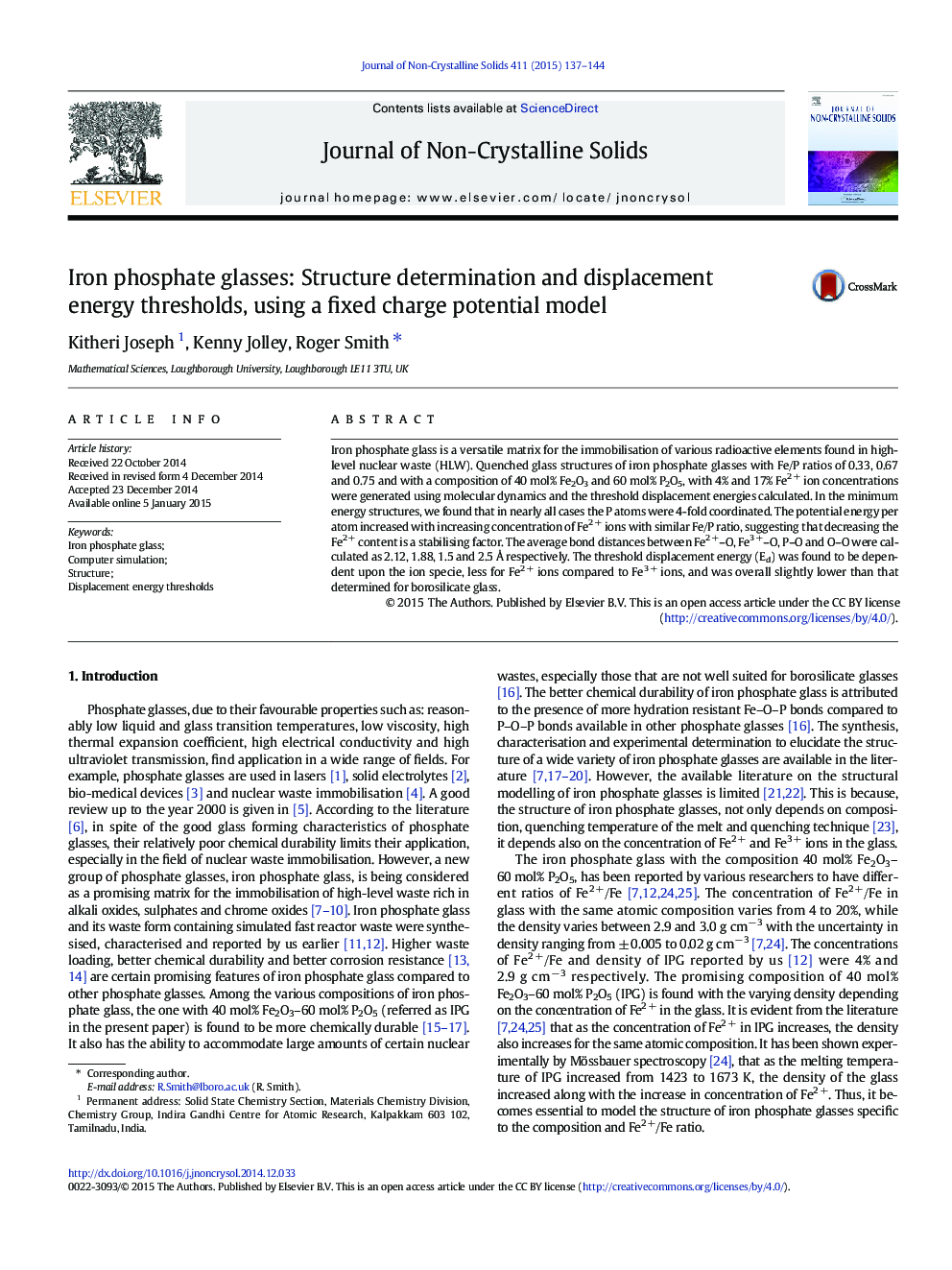| Article ID | Journal | Published Year | Pages | File Type |
|---|---|---|---|---|
| 7901189 | Journal of Non-Crystalline Solids | 2015 | 8 Pages |
Abstract
Iron phosphate glass is a versatile matrix for the immobilisation of various radioactive elements found in high-level nuclear waste (HLW). Quenched glass structures of iron phosphate glasses with Fe/P ratios of 0.33, 0.67 and 0.75 and with a composition of 40Â mol% Fe2O3 and 60Â mol% P2O5, with 4% and 17% Fe2Â + ion concentrations were generated using molecular dynamics and the threshold displacement energies calculated. In the minimum energy structures, we found that in nearly all cases the P atoms were 4-fold coordinated. The potential energy per atom increased with increasing concentration of Fe2Â + ions with similar Fe/P ratio, suggesting that decreasing the Fe2Â + content is a stabilising factor. The average bond distances between Fe2Â +-O, Fe3Â +-O, P-O and O-O were calculated as 2.12, 1.88, 1.5 and 2.5Â Ã
respectively. The threshold displacement energy (Ed) was found to be dependent upon the ion specie, less for Fe2Â + ions compared to Fe3Â + ions, and was overall slightly lower than that determined for borosilicate glass.
Related Topics
Physical Sciences and Engineering
Materials Science
Ceramics and Composites
Authors
Kitheri Joseph, Kenny Jolley, Roger Smith,
